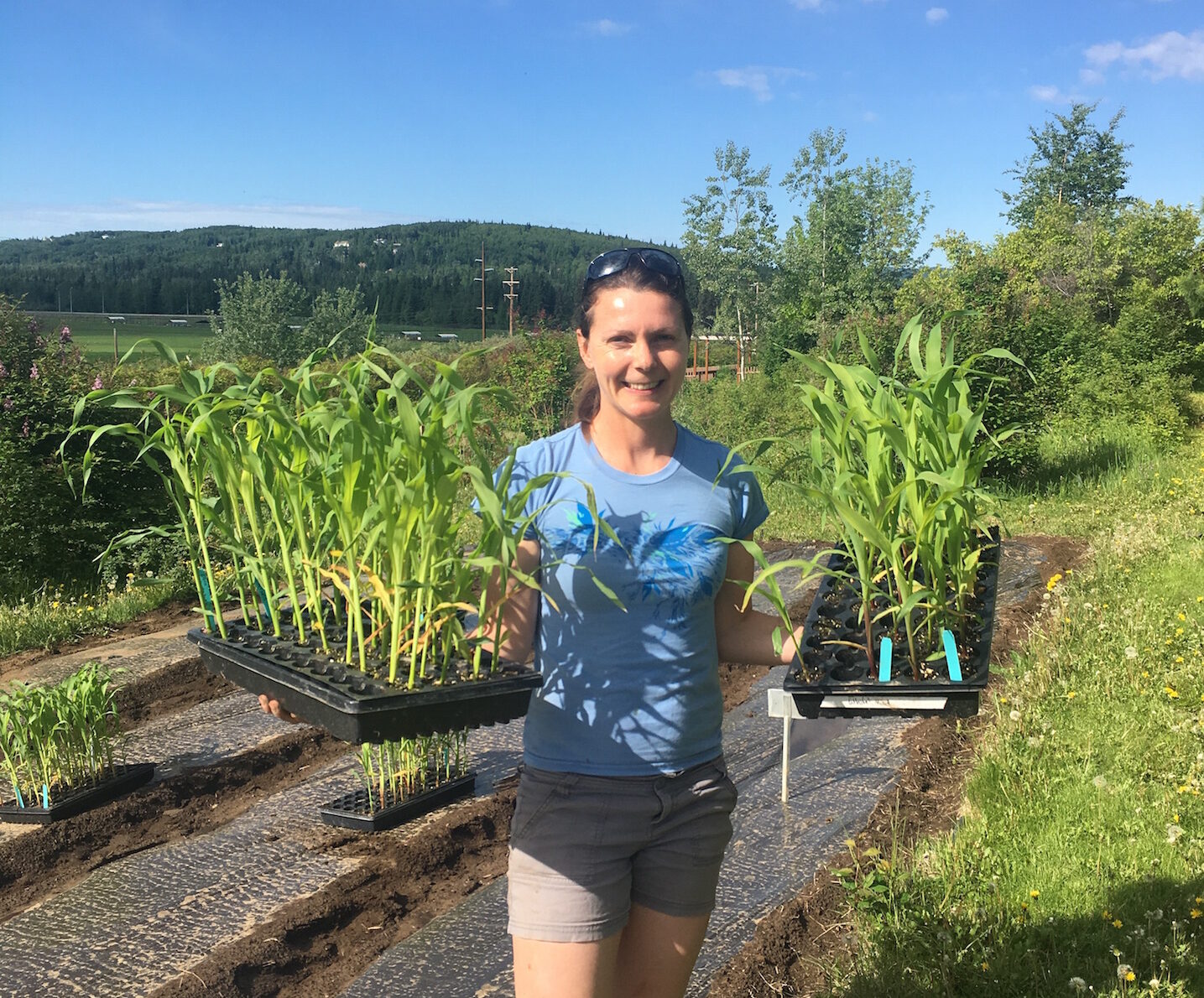Growing corn in Alaska is a pain in the neck. If you’re lucky, the summer is hot and you get a few ears. If you’re not lucky, and the summer is cold and rainy, you get zilch. Either way, a lot of effort and garden space goes into your attempts with mixed results.

Heidi Rader prepares to plant corn seedlings. They were seeded in a greenhouse on May 4th and planted on June 3rd and were a tad larger than ideal. Photo by Glenna Gannon.
Still, Alaska gardeners’ eyes light up when you talk about growing corn in a way you don’t see when you mention, say, kale, which is so much more reliable, nutritious and higher-yielding. Maybe part of the allure of growing corn is the challenge. Or maybe that it’s about 10 times sweeter than kale. If you get a twinkle in your eye when you hear corn-growing talk, here are some things you should know.
First, you will want to choose a variety that matures in around 70 days or less. You’ll also want to consider the genetics of the corn variety you’re selecting and not just for curiosity’s sake. It’s important for predicting cold hardiness, sweetness, seedling vigor (in cold soils), the shelf life or rate that sugar turns to starch and isolation requirements. I’m not going to lie, it’s a little bit confusing, but Delaware Cooperative Extension, does a great job of delineating the corn by their genetic traits. Johhny’s Seeds also provides a nice comparison of sweet corn types. Continue reading